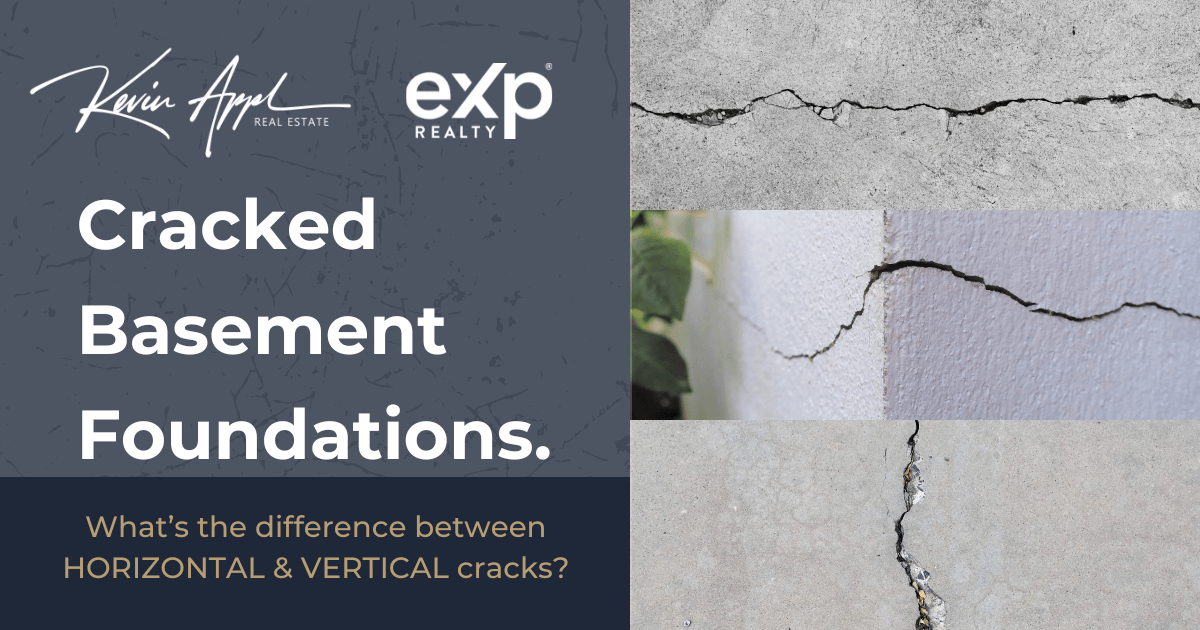
Different Types of Concrete Foundation Cracking.
Tags: Angled Crack, Concrete, Damaged Concrete, Foundation Cracks, Horizontal Crack, Repair, Vertical Crack
Foundation cracks are a common problem that homeowners and real estate professionals alike must be aware of. While some cracks are minor and can be repaired easily, others can indicate significant structural damage that requires prompt attention. In this article, we’ll explore the different types of foundation cracks in more detail and discuss the causes, risks, and potential solutions.
Types of Foundation Cracks
As mentioned earlier, there are four primary types of foundation cracks: vertical, horizontal, diagonal, and corner. Let’s take a closer look at each of these cracks.
Vertical Cracks
Vertical cracks are the most common type of foundation cracks and typically run from the top of the foundation wall to the bottom. They are usually caused by normal settling of the house and are not always a cause for concern. However, if the cracks exceed 1/8 inch in width, they may indicate a more significant problem.
Horizontal Cracks
Horizontal cracks are a more serious type of foundation crack and can indicate significant structural damage. They typically occur due to pressure from soil or water against the foundation wall, which can cause the wall to bow or bulge. If left unaddressed, horizontal cracks can lead to structural failure and significant safety risks.
Diagonal Cracks
Diagonal cracks can be a sign of significant structural damage and typically run at an angle between vertical and horizontal. They can be caused by soil pressure, but they can also indicate differential settlement, which is when different parts of the foundation settle at different rates. If left unaddressed, this can cause the foundation to shift, resulting in significant structural damage.
Corner Cracks
Corner cracks occur at the corner of the foundation wall and are usually caused by excessive pressure from soil or water. They can lead to structural instability if not repaired promptly.
Causes of Foundation Cracks
Foundation cracks can be caused by several factors, including:
Soil settlement occurs when the soil beneath the foundation compresses or shifts, causing the foundation to sink. This can result in cracks in the foundation and other structural issues.
Poor construction practices, such as inadequate reinforcement, can also cause foundation cracks. This is particularly true in areas prone to earthquakes, as a poorly constructed foundation can collapse during seismic activity.
Too Much pressure when backfilling the foundation. This can happen all to easily if the heavy equipment operator isn’t paying attention or drops the fill material too fast and it slams into the foundation wall hard. This can cause deflection or damage.
Water damage is a common cause of foundation cracks, particularly in areas with high water tables or frequent flooding. When water seeps into the soil around the foundation, it can cause the soil to expand and contract, putting pressure on the foundation and causing cracks.
Plumbing leaks can also cause foundation cracks, particularly if the leaks are located beneath the foundation. Over time, the leaking water can erode the soil, causing the foundation to settle or shift.
Risks of Foundation Cracks
Foundation cracks can pose several risks to homeowners, including:
Structural Damage
Foundation cracks can indicate significant structural damage, which can compromise the stability of the house. If left unaddressed, this can lead to more severe issues, such as a collapsed foundation or walls.
Safety Hazards
Foundation cracks can also pose safety hazards to homeowners and their families. For example, a collapsed foundation can cause severe injury or death, while cracks in walls can allow pests or toxins to enter the home.
Decreased Property Value
Foundation cracks can decrease the value of a property, particularly if they indicate significant structural damage. This can make it harder to sell the home or result in a lower sale price.
Potential Solutions for Foundation Cracks
Fortunately, there are several potential solutions for foundation cracks, depending on the severity of the damage and the cause of the cracks. Here are a few common solutions:
Crack injection is a common method used to repair vertical cracks in foundations. The process involves injecting an epoxy or polyurethane resin into the crack, which then hardens and seals the crack. This method is effective for minor cracks, but it may not be suitable for larger cracks or those caused by structural issues.
Foundation underpinning involves installing additional support beneath the foundation to stabilize it. This method is typically used for foundation settling or sinking caused by soil instability. The process involves excavating around the foundation and installing additional support columns or piers beneath it.
Foundation waterproofing involves sealing the foundation to prevent water from entering the basement or crawl space. This method is particularly effective for foundation cracks caused by water damage or high water tables. The process involves excavating around the foundation, installing drainage systems, and sealing the foundation with a waterproof membrane.
If foundation cracks indicate significant structural damage, structural repairs may be necessary. This may involve rebuilding or reinforcing the foundation walls or repairing other structural elements of the house. Structural repairs are typically more costly and time-consuming than other repair methods, but they may be necessary to ensure the safety and stability of the house.
Conclusion
Foundation cracks are a common issue that homeowners and real estate professionals must be aware of. While some cracks are minor and can be easily repaired, others can indicate significant structural damage that requires prompt attention. Understanding the different types of foundation cracks, their causes, and potential solutions is crucial for maintaining the safety and stability of a home. As a real estate professional, it’s important to be knowledgeable about foundation cracks and to advise your clients accordingly. A home inspection can help identify any existing foundation cracks and determine if further evaluation or repairs are necessary. By being proactive and addressing foundation cracks promptly, homeowners can ensure the safety and value of their property for years to come.
